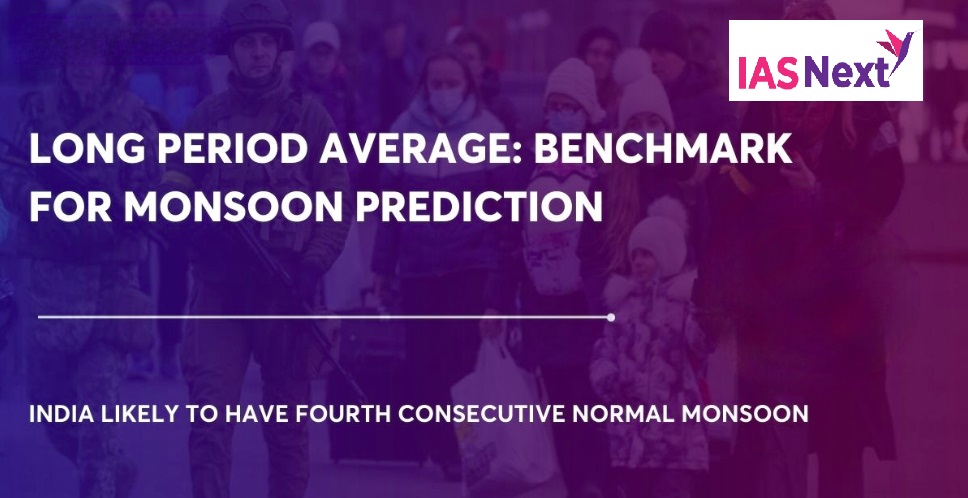CURRENT AFFAIRS
Get the most updated and recent current affair content on Padhaikaro.com
“Long period average” (LPA)
- IAS NEXT, Lucknow
- 18, Apr 2022

Reference News:-
The country is likely to receive a normal monsoon for the fourth consecutive year, the India Meteorological Department (IMD) said in its first Long Range Forecast (LRF) for this year.
How is it predicted?
The IMD predicts a “normal”, “below normal”, or “above normal” monsoon in relation to a benchmark “long period average” (LPA).
- According to the IMD, the “LPA of rainfall is the rainfall recorded over a particular region for a given interval (like month or season) average over a long period like 30 years, 50 years, etc”.
- Along with the countrywide figure, the IMD also maintains LPAs for every meteorological region of the country.
Why LPA is needed?
Because annual rainfall can vary greatly not just from region to region and from month to month, but also from year to year within a particular region or month, an LPA is needed to smooth out trends so that a reasonably accurate prediction can be made.
- A 50-year LPA covers for large variations in either direction caused by freak years of unusually high or low rainfall (as a result of events such as El Nino or La Nina), as well as for the periodic drought years and the increasingly common extreme weather events caused by climate change.
The onset needs a trigger in the form of a weather system in the proximity of the coastline. These are ocean born phenomena which accentuate the monsoon surge around the normal time of onset. These include:
- The low-pressure area or depression in the Bay of Bengal during the last days of May or the beginning of June.
- There are such systems in the Arabian Sea as well around the same time which results in onset over the mainland.
- ‘Cyclonic Vortex’ is another factor which appears in the Southeast Arabian Sea, off Kerala and Lakshadweep region. They also shift along the west coast to push the monsoon current.
- The formation of ‘trough’ off the west coast due to temperature differential between land and sea. This situation could be for a mild start and weak progress.
- Lastly the cross-equatorial flow, wherein the trade winds from the Southern Hemisphere crossover to the Northern Hemisphere can bring a strong monsoon surge towards the Indian mainland.
Monsoon in India- related key facts:
- Generally, across the world, the monsoons are experienced in the tropical area roughly between 20° N and 20° S.
- Out of a total of 4 seasonal divisions of India, monsoon occupies 2 divisions, namely- the southwest monsoon season and the retreating monsoon season.